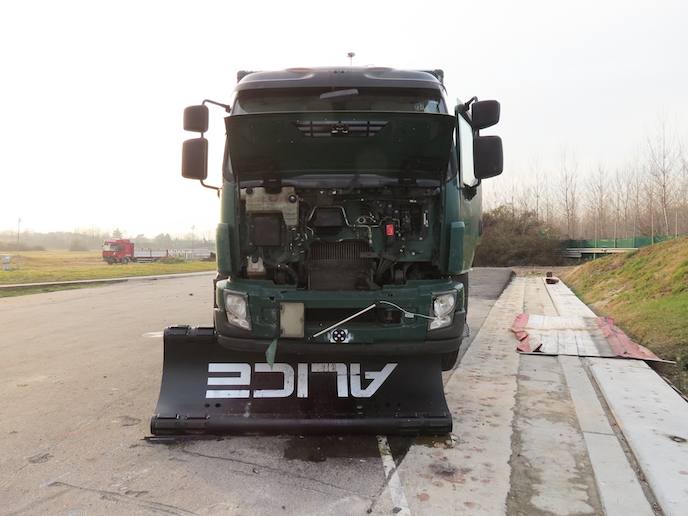Multipurpose barrier stops unauthorised vehicles
Over the last few years, public spaces within European cities have become a target for vehicle attacks. The usual protection involves the installation of bollards or erection of temporary measures, such as jersey barriers(opens in new window), to prevent vehicle entry. While effective, cheap and practical – they can be relatively easily installed with a forklift – the devices are not designed to blend into their environment. Additionally, more active deterrents such as retractable bollards can’t work in some locations due to the necessary underground infrastructure. The EU-supported ALICE project has developed a custom-made solution for which they have applied for a patent pending, that can be integrated into urban architecture as a design feature, while offering multiple functions. For example, ALICE (Armored Liftable anti-Intrusion Control Element) can work as a bicycle rack, planter, bench or even information display unit. “Last January our crash test confirmed the effectiveness of the concept. The device is now ready to set a new standard for safe and smart protection of people and places,” says Tiziano Vandi from Tincar(opens in new window) (website in Italian) project partner and project coordinator.
The modular solution
The ALICE system is specifically designed to protect spaces and people, while blending into the urban environment, whether that be streets, squares or crowded areas where people congregate or wait, such as outside stadiums or theatres. “We were inspired by martial arts, especially judo’s tomoe-nage technique where the aggressor’s energy is used against themselves,” explains Vandi. The ALICE barrier is made from a mix of steel and concrete. To be as customisable as possible, it is available in different dimensions, variants and fittings and can be assembled in a modular way. Its onboard mechanical device allows quick disassembly by two people, despite weighing almost 2 tonnes. Depending on the intended use, the units can contain a variety of electronic devices responsible for specialist tasks, such as identification of incoming vehicles, people counting, sounding alarms or flying a drone. Last January, the system was subject to a physical crash test at the Milan site of CSI(opens in new window), where a lorry was driven at full speed into the device. “I think those few seconds were the most anxious in our lives, but the device exceeded our most optimistic expectations. We had effectively stopped a speeding lorry, while our device remained unharmed,” adds Vandi. The device was certified as being IWA14-1, PAS68, CWA16221 and ASTM-F2656(opens in new window) compliant.
Balancing security with social acceptability
Recent vehicle-ramming attacks by terrorist groups or extremists have often been carried out by single individuals who have exploited the vulnerability of public spaces, so-called ‘soft targets’. These have included pedestrian streets, tourist sites, transport hubs, shopping malls, worship places, outdoor markets, concert halls and city squares. The challenge for city authorities is to keep people safe. At the same time, as far as possible, the designers want to avoid severe disruption to the public way of life enjoyed in pluralistic and tolerant societies. ALICE has been specifically designed to balance both needs. “ALICE reduces the psychological and social impact of what has been described as militarised, urban infrastructure,” notes Vandi. The project’s host Martini Prefabbricati(opens in new window) (website in Italian) partnered with Tincar to found SecurityCities(opens in new window) which is dedicated to developing and marketing ALICE. Martini has set up a construction unit, operational soon, which will be supported by the installation department. Once final development has been completed, the aim is to be market ready for city authorities, and others, within months.



